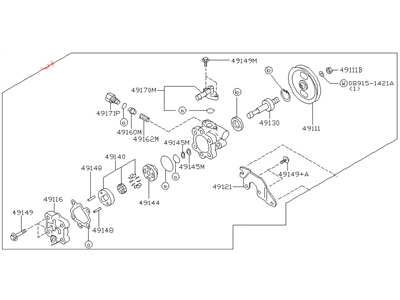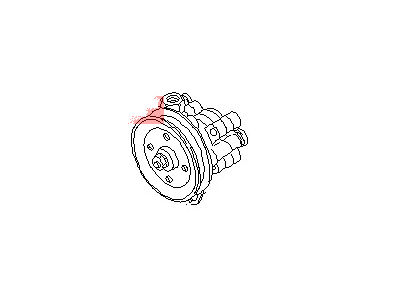×
- Hello
- Login or Register
- Quick Links
- Live Chat
- Track Order
- Parts Availability
- RMA
- Help Center
- Contact Us
- Shop for
- Nissan Parts
- Nissan Accessories

My Garage
My Account
Cart
Genuine Nissan 300ZX Power Steering Pump
Power Steering Pump Unit- Select Vehicle by Model
- Select Vehicle by VIN
Select Vehicle by Model
orMake
Model
Year
Select Vehicle by VIN
For the most accurate results, select vehicle by your VIN (Vehicle Identification Number).
5 Power Steering Pumps found
Nissan 300ZX Power Steering Pump
If you need any OEM Nissan 300ZX Power Steering Pump, feel free to choose them out of our huge selection of genuine Nissan 300ZX Power Steering Pump. All our parts are offered at unbeatable prices and are supported by the manufacturer's warranty. In addition, we offer quick shipping to have your parts delivered to your door step in a matter of days.
Nissan 300ZX Power Steering Pump Parts Questions & Experts Answers
- Q: How do you remove and replace the power steering pump and reservoir on Nissan 300ZX?A:The power steering pump has to be removed first of all, to achieve it the drive belt has to be detached, and the negative terminal of the battery has to be disconnected with the cable which should be put far from the terminal. Third, remove the electrical connector of the power steering pump that can be released via the tab that is found on top. First, the cooling system reservoir must be unbolted and the low fluid level connector, which is fastened by tang most often with the help of a small screwdriver, should be disconnected, but the coolant hose must remain connected. Place a catch pan underneath the vehicle to capture any dripping hydraulic fluid, then thereafter, slacken the engine lifting bracket and the ones holding the pump to the block. Remove the bolt for the banjo connected to the high-pressure line which lifts the hose out of the way. Remove the bottom hose from the pump, pinch its end with your thumb, and pull the pump out of the engine compartment; twist a bolt into the hose to stop leaking. Replace the return hose back to the pump and fit a clamp on it, finally place the pump back onto the bike's engine and tighten the screws. Bolt fitting of the banjo bolt, and the engine lifting bracket must be bolted back and the power steering pump electrical connector must be connected back. Lock the coolant reservoir cap and, using a wrench, tighten the electrical connector; inspect the power steering fluid and fill it when necessary before reconnecting the car battery negative terminal. While dropping the power steering fluid reservoir, you have to take off the cap and then also pull out the fluid screen and employ a small hand pump to suck out the fluid. Unclasp the hoses connected at the bottom of the reservoir, unscrew the bolts which hold the reservoir to the fender well and then, pull the reservoir free. Slide in a new reservoir on to the fender well, connect the hoses & use clips to secure them, replace the screen and finally pump the reservoir with some quantity of power steering fluid.
Related Nissan 300ZX Parts
Browse by Year
1996 Power Steering Pump 1995 Power Steering Pump 1994 Power Steering Pump 1993 Power Steering Pump 1992 Power Steering Pump 1991 Power Steering Pump 1990 Power Steering Pump 1989 Power Steering Pump 1988 Power Steering Pump 1987 Power Steering Pump 1986 Power Steering Pump 1985 Power Steering Pump 1984 Power Steering Pump













